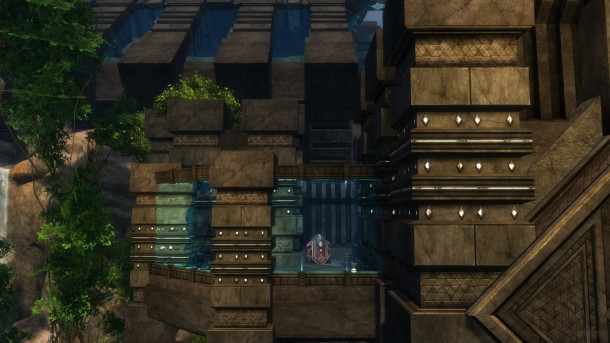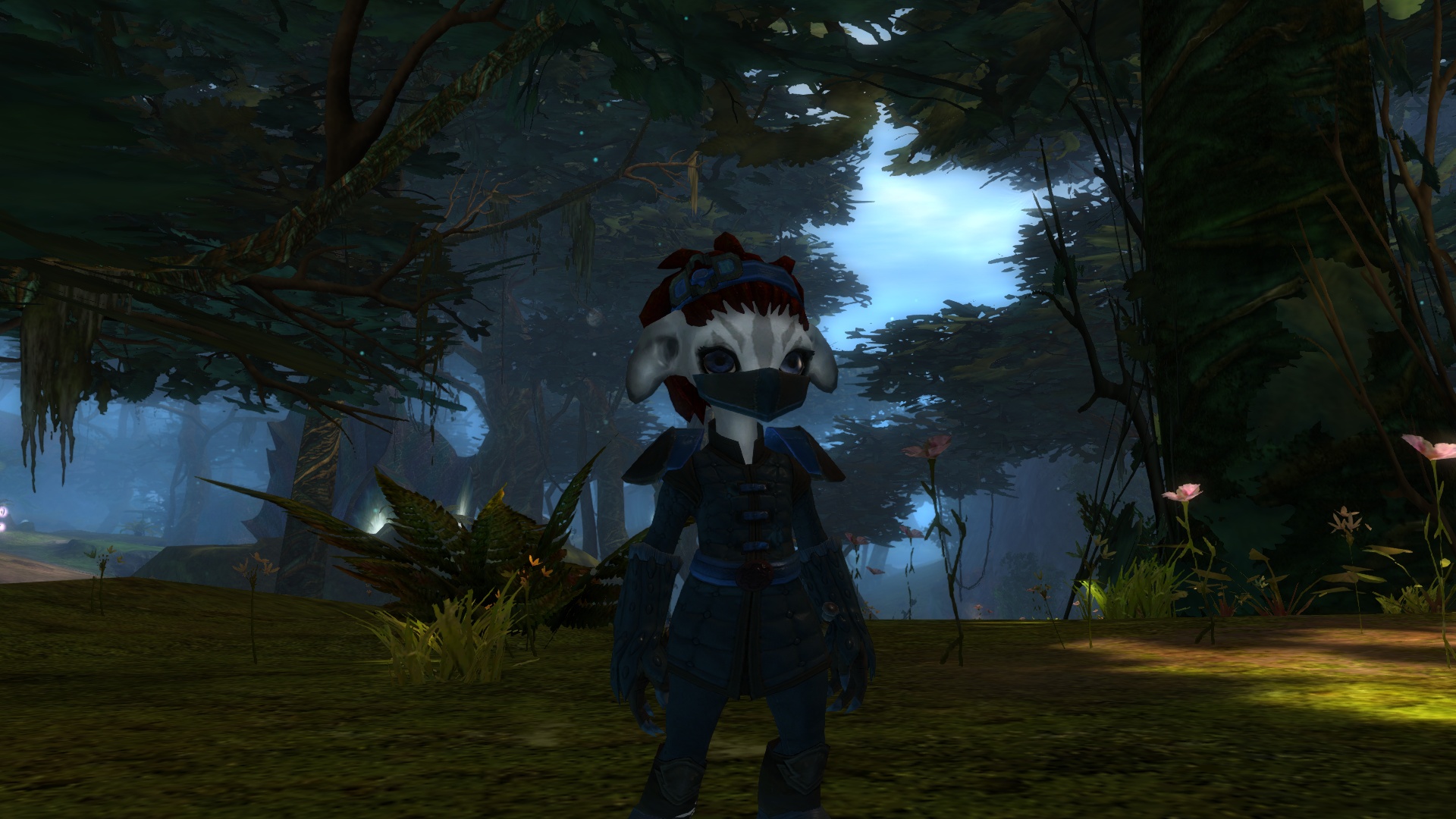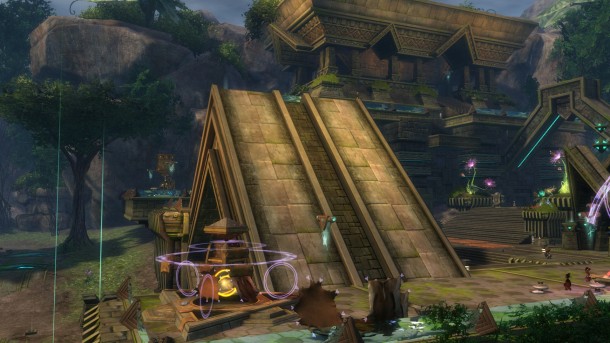
When you think about the “massively multiplayer” genre, it’s hard to not consider a handful of titles, World of Warcraft being chief among them. For years, just about every up-and-coming release in the MMO sphere has been tailor-made to borrow design aesthetics from Blizzard’s behemoth while taking a step or two in their own direction. This year, 2012 finally lets us get our hands on a handful of games that are diversifying the genre in more elaborate ways. From the third-person shooter-styled combat of TERA to the heavy emphasis on bending the structures of questing in The Secret World, we’re seeing more conceptual risks in this space and it’s that injection of new ideas that the genre needs.
Leading the charge in a different direction is Guild Wars 2, ArenaNet’s long-awaited follow-up to the original 2005 pseudo-MMO. Radical modifications to that original formula have evolved the game into one much more deserving of the “massively multiplayer” moniker, modernizing and reshaping the ideologies that made Guild Wars such an interesting beast to play. With the third and final Beta Weekend Event, anyone who had pre-ordered the game was finally able to check out the previously untestable races, the diminutive Asura and the leafy Sylvari, exploring a decent amount of new content in the process. With flapping, bat-like ears and a bright blue headband, my Asuran thief Rinaera headed off in search of adventure and excitement.

Players who decide to make their way through GW2’s world of Tyria as the plucky Asura begin their journey in the Metrica Province, a grassland dotted with forests and cut into four different sections by a snaking body of water. Asuran buildings, full of sharp and jagged sides that lend themselves to a cubist’s architectural dream, are a foreign presence that contrast well with the smooth curves of the landscape. While there didn’t seem to be nearly as many secret nooks and crannies across the more open regions of this starting zone, there’s plenty that gets laid out for a young Asuran adventurer, to the point where they’ll never have to look far to find something worth checking out.
Having spent time in the dry plains of the cat-like Charr homeland in previous Weekend Events, there’s a much more lighthearted feel to traipsing around the Metrica. Rinaera spent time playing golem chess and finding new ways to advance Asuran science rather than worrying about the immediate defense of her homeland. Where the Charr would fear for their safety and lash out at every turn, the Asura gather on a regular basis to host golem fights for the sole purposes of entertainment and privilege. The contrast is so sharp that it feels as if these two races are separated by more than just the different halves of the world they happen to occupy.
It’s not all sunshine and spanners for the plucky little moppets. While all Asura believe in a guiding principle known as the “Eternal Alchemy”, a growing subsection of the population calling themselves the Inquest seeks to control and twist that principle to their own misguided aims. This religious schism sets up a lot of the conflict throughout one’s adventures in Metrica, serving as a secondary foundation for the early Asuran-specific quests. They’re an ever-present foe, constantly digging their way into your plans and trying to foil whatever new idea you might be cooking up.
With the threat of the Inquest staring her down time and time again, Rinaera found a small group of consistent allies that managed to make a pretty profound impression on the character and the story itself. Where most quest-givers are, in the tradition of most MMOs, a chance meeting or a singular contract, a handful of faces become familiar and integral parts of character development. Chief among these characters for the Asura is Zojja, an eccentric golemancer expertly voiced by Felicia Day. By framing several major story quests alongside these important figures, they become more than just NPCs : they’re actors in the stage show of your character’s journey, and in my case, pivotal pieces in Rinaera’s ascension from zero to hero.

By pushing forward with a story-centric focus, the world of Tyria feels more lived-in and immersive. The way events play out and fold into each other injects a sense of life and continuity to the game, something that can’t be said for just about any other MMO on the market. Even in the starting zone, there’s an immense amount of content to work your way through, from basic events to specific skill point challenges. With the latest weekend event another bit of collectible goodness was added in the form of Vistas, specific locations that offer bird’s eye views of the regions in an Assassin’s Creed-esque fly-by. Completionists will be happy to know that all of these things are independently tracked and can contribute to a final region-wide bonus reward: a giant batch of loot, experience and gold.
At its heart, Guild Wars 2 feels like a love letter to the explorers and adventurers. It’s very seldom that a game intentionally tries to get out of your way, but after close to fifteen hours bounding across the plains of the Metrica Province, there was never a feeling of frustration or “same ol’, same ol’”. Events feel like they’re worth repeating again and locations don’t seem as if they’ve been dragged and dropped together. GW2’s most important feature, despite all this, is the fact that it manages to eschew “the grind” to focus on having countless different things to pay attention to, and in doing so the player is led to ask, “What do I want to do?” instead of, “What do I have to do?”
That’s a question I can’t wait to ask myself again. Guild Wars 2 launches on August 28th for PC.




1 Comment